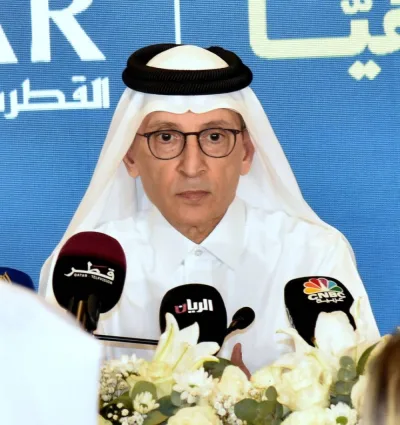Pickup in loans for the services segment by 3% (QR7.1bn) is among the highlights of ‘Qatar Monthly Banking Sector update’ for March by QNB Financial Services (QNBFS).Qatar banking sector’s total assets increased 1% during March to reach QR1.862tn.Loans went up 0.6% during the month to reach QR1.25tn. Deposits grew by 1.8% during March to reach QR967.5bn, QNBFS said Tuesday.“The highlight for the month of March is the pickup in loans for the services segment by 3.0% (QR7.1bn), which indicates good demand in restaurants and hotels and pickup in the tourism sector,” an analyst told Gulf Times.The total assets rise in March was mainly due to an increase by 7.7% in foreign assets, QNBFS noted.Total assets have declined by 1.3% in 2023, compared to a growth of 4.2% in 2022. Assets grew by an average 6.9% over the past five years (2018-2022)Liquid assets to total assets was at 30.4% in March, compared to 30.3% in February.The loans gain in March was mainly due to an increase both in the private (0.7%) and public (0.6%) sectors, QNBFS said.Loans have marginally gone down by 0.1% in 2023, compared to a growth of 3.3% in 2022. Loans grew by an average 6.7% over the past five years (2018-2022).Loan provisions to gross loans was at 3.7% in March compared to 3.6% in February.Deposits growth in March was mainly due to both a rise by 3% in public sector and 2.8% in non-resident deposits.Deposits have gone down by 4.9% in 2023, compared to a growth of 2.6% in 2022. Deposits grew by an average 4% over the past five years (2018-2022).The loans to deposits ratio declined during the month to 129.7% in March. Loans went up by 0.6% in March to reach QR1,25tn, while deposits increased 1.8% in March to reach QR967.5bn.The services segment was the main contributor towards the private sector loan gain.Services (contributes 30% to private sector loans) increased by 3% month-on-month (MoM- 2.4% in 2023), while general trade (contributes 21% to private sector loans) gained 0.9% MoM (+1.7% in 2023). However, the real estate segment (contributes 22% to private sector loans) declined by 1.8% MoM (-0.1% in 2023), while consumption and others (contributes 20% to private sector loans) moved lower by 0.3% MoM (-0.8% in 2023) in March.The government segment (represents 29% of public sector loans) gained 2.2% MoM (-10.2% in 2023), while the government institutions’ segment (represents 67% of public sector loans) loan book added 0.1% MoM (+1.6% in 2023).However, the semi-government institutions’ segment declined by 1.7% MoM (-2.3% in 2023). Outside Qatar loans moved up marginally by 0.1% MoM (0.0% in 2023) during the month of March.The government segment (represents 29% of public sector deposits) was the main driver with a growth of 12.4% MoM (-8.4% in 2023), while the government institutions’ segment (represents 59% of public sector deposits) moved up 3.4% MoM (0.7% in 2023).However, the semi-government institutions’ segment fell by 16.4% MoM (-20.3% in 2023) in March, QNBFS said.Private sector deposits moved up by 0.6% MoM (-0.5% in 2023) in March. On the private sector front, the consumer segment increased by 1.1% MoM (+3.0% in 2023) during March, while the companies and institutions’ segment edged up by 0.1% MoM (-4.0% in 2023), QNBFS noted.

Pratap John
Pratap John is Business Editor at Gulf Times. He has mainstream media experience of nearly 30 years in specialties such as energy, business & finance, banking, telecom and aviation, and covered many major events across the globe.
Most Read Stories
3
4























